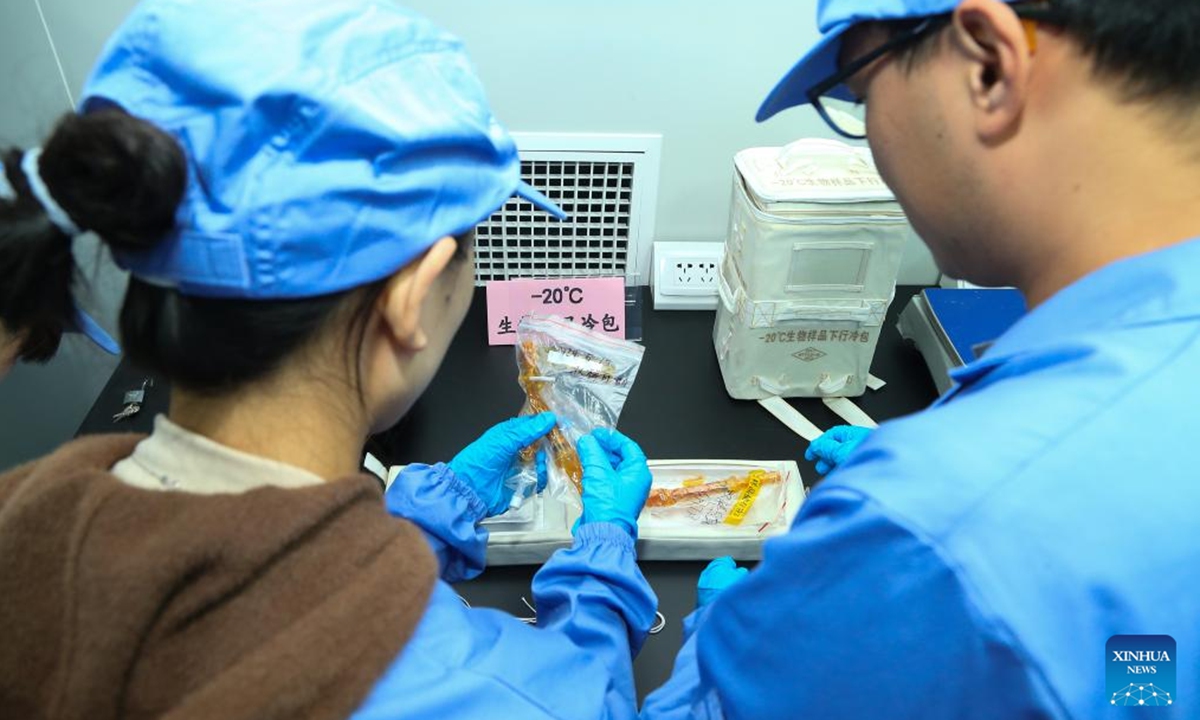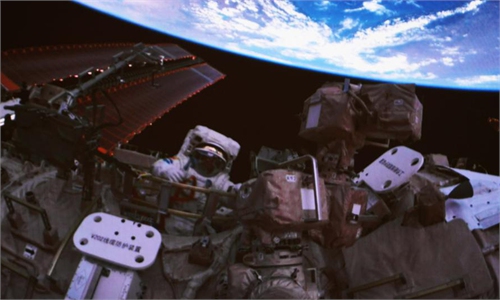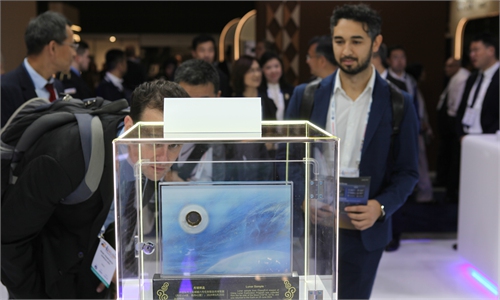
Researchers examine space station experimental samples brought back by the Shenzhou-18 spacecraft at the Technology and Engineering Center for Space Utilization under the Chinese Academy of Sciences in Beijing, capital of China, Nov. 4, 2024. (Technology and Engineering Center for Space Utilization under the Chinese Academy of Sciences/Handout via Xinhua)
On November 4, the seventh batch of space science experiment samples from the Chinese space station successfully returned to Earth with the Shenzhou-18 spacecraft, which includes a total of 55 types of scientific experiment samples, covering 28 projects in fields such as space life science, space materials science, and microgravity combustion science, with a total weight of approximately 34.6 kilograms.
Is there any possibility of interstellar life propagation? What are the effects of space cultivation on vertebrates? Bearing these questions in mind, research fellows at the Technology and Engineering Center for Space Utilization, Chinese Academy of Sciences (CAS), received a group of life science experiment samples recently and have been preparing them for further studies.
Space life science studies have occupied a central role in humanity's journey toward becoming an interstellar species, space observers said. These experiments can not only deepen the public's understanding of the essence of life but also promote the development of new drugs and medical technologies. Furthermore, long-term space experiments provide scientific foundations for future space habitation and life support systems, Kang Guohua, a senior member of the Chinese Society of Astronautics and a professor of Aerospace Engineering at Nanjing University of Aeronautics and Astronautics, told the Global Times.
There is still a gap between China and the US in the application of space technology. However, China possesses a latecomer advantage, allowing it to propose new solutions based on existing foundations. As an open platform, the Chinese space station will welcome more international partners to jointly carry out research, and will sure accomplish greater achievements over the next 20 years, Kang said.
Surviving in space
Among the samples returned were 215 extremophilic microbes -organisms that are able to live (or in some cases thrive) in extreme environments.
"They don't only adapt to one specific extreme condition but possess strong resilience against various factors, allowing them to survive under high radiation, low temperatures and other conditions. Studying these microorganisms helps us understand how life behaves in extreme environments," Zhang Gaosen, a research fellow at the Northwest Institute of Eco-Environment and Resources of CAS, told the Global Times.
Zhang noted that the primary purpose of bringing these microorganisms into space is to study their survival capabilities in the space environment. By exposing them to the radiation and microgravity of space and observing their survival duration, researchers can gain insights into the potential for life to spread between planets. "This relates to the hypothesis that life on Earth may have originated from other celestial bodies," he added.
This research also contributes to planetary protection. "In deep space exploration missions, scientists must ensure that Earth-based life is not inadvertently transferred to other celestial bodies and pollute their original ecological environments. For instance, in Mars exploration, it is essential to prevent contamination from Earth's microorganisms," Zhang said. Further testing and analysis are required to assess the experiment's results.
Apart from studying extremophilic microbes, another highlight for the Shenzhou-18 mission is the "adventure of the very first fish," which were launched aboard the craft in April this year. Using zebrafish and hornwort, the experiment was China's first in-orbit aquatic ecological research project.
The mini aquatic ecosystem survived successfully on the Chinese space station for 44 days, 14 days longer than the designed lifespan of the experiment, CCTV reported. During the mission, taikonauts found zebrafish exhibiting abnormal directional behaviors in microgravity, such as swimming upside down, spinning, and circling.
This experiment marks a breakthrough for China in the space cultivation of vertebrates and revealed that space environment has a significant impact on the behavior of zebrafish, Zhang Xianyuan, a research fellow from the Institute of Hydrobiology of CAS was quoted as saying in the Science and Technology Daily on November 6. "Next, we will conduct a detailed analysis of the returned samples. We expect to gain new insights into the material cycling mechanisms of aquatic ecosystems in space environments," Zhang said.
Performances beefed up
Farmer Wang Tousheng from Suichuan County, East China's Jiangxi Province, have been checking on the growth of his lotus more frequently than usual after completing sowing around this year's Qingming Festival in April.
"Look, the leaves are already sprouting. With careful management, this year's harvest is guaranteed," Wang said proudly to CCTV reporters.
These lotus seeds have been to space. "They are indeed different with ordinary ones; the yield per acre doubled, and the taste is sweeter," Wang enthusiastically shared. According to CCTV, the outperforming "space lotus" now accounts for over 80 percent of the national white lotus planting area.
Space-induced mutation breeding has become a significant feature of China's research in space life sciences. Since 1987, when the first plant was brought to space, China has conducted over 3,000 space breeding experiments, resulting in more than 260 approved varieties of staple grains and hundreds of new varieties of vegetables, fruits, forestry, and flowers.
This has led to an annual increase in grain production of over 2 billion kilograms, creating direct economic benefits exceeding 100 billion yuan, the CCTV report said.
Space breeding has now entered a new phase, said Zhang Chuanjun, a senior aerospace breeding engineer. He told the Global Times that the initial method involved sending seeds into space, exposing them to the space environment for mutation, and then bringing them back to Earth for cultivation.
Now, however, researchers are attempting to complete the entire growth and reproduction cycle in space, such as cultivating rice and thale cress from seed to seed. "These experiments have produced crops with better performances, for example, space rice with a sugar content six times higher than that of ordinary rice," Zhang said.
It has proven that not only plants grow better in space environments, but animals can have longer lives after touring through space too. Relevant studies on mice have shown that certain cells can extend their lifespans in microgravity, Zhang said.
"This discovery could provide insights for extending human lifespan, as research indicates that applying these cellular characteristics to humans might increase life expectancy by 1.5 to 2 times, holding significant value for biology and medicine," Zhang noted.



